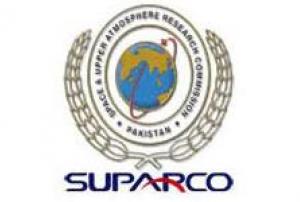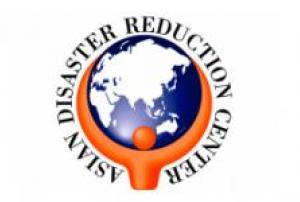Earthquake
Definition
Facts and figures
Further information
UN-SPIDER Regional Support Offices with hazard-specific expertise
Related content on the Knowledge Portal
The Azores archipelago is exposed to different geological and meteorological hazards already responsible for thousands of deaths and severe damages. In order to detect precursory signals and develop early warning systems a multi-parametric monitoring network is under operation. Geophysical, geodetic, geochemical and meteorological independent techniques provide data that are integrated in the scope of a continuous hazard and risk assessment programme to support civil protection regional and local authorities.
The Center for Satellite Based Crises Information (ZKI), a service of the German Remote Sensing Data Center (DFD) of the German Aerospace Center (DLR), provides rapid processing and analysis of satellite imagery during natural and environmental disasters, for humanitarian relief activities and civil security issues worldwide. Contributions of ZKI are mainly made during the emergency response phase, but activities for preparedness, early warning and recovery are equally important tasks.
This post describescontribution made by ZKI during the Padang Earthquake of 2009 and the Mentawai Tsunami of 2010. Using Quickbird, IKONOS, ALOS and WorldView-1 nad -2 images situation and disaster extend maps were provided for initial response activities.
Publishing institution:The Center for Satellite Based Crises Information (ZKI), a service of the German Remote Sensing Data Center (DFD) of the German Aerospace Center (DLR), provides rapid processing and analysis of satellite imagery during natural and environmental disasters, for humanitarian relief activities and civil security issues worldwide. Contributions of ZKI are mainly made during the emergency response phase, but activities for preparedness, early warning and recovery are equally important tasks.
This post describescontribution made by ZKI during the Padang Earthquake of 2009 and the Mentawai Tsunami of 2010. Using Quickbird, IKONOS, ALOS and WorldView-1 nad -2 images situation and disaster extend maps were provided for initial response activities.
Publishing institution:UNOOSA/UN-SPIDER has activated the International Charter: Space and Major Disaster to provide satellite imagery for the two strong earthquakes that occurred in Iran on 11 August 2012. This international mechanism was activated on behalf of the Iranian Space Agency, host of UN-SPIDER's Regional Support Office in Iran. The German Aerospace Center (DLR) is the project manager for this activation. The imagery was acquired by Pléiades HR1 satellite on 17 August 2012 and subsequently processed into a map by SERTIT.
The two strong earthquakes in north-west Iran had been followed by multiple aftershocks. 300 people were killed, more than 3000 victims were injured and 16,000 people were left homeless. The quakes measured on Richter scales of 6.4 and 6.3, damaging rural villages in Ahar, Varzgahan and Harees, in the city of Tabriz. Some 20 villages in mountainous areas have been completely destroyed whilst hundreds have been damaged.
Search and rescue operations came to a close…
read moreThe Space and Upper Atmosphere Research Commission (SUPARCO) of Pakistan and the United Nations Office of Outer space Affairs (UNOOSA) signed the cooperation agreement on the establishment of a UN-SPIDER Regional Support Office (RSO) on the occasion of the 47th Scientific and Technical Subcommittee sessions on 12 February 2010.
SUPARCO, the national space agency, was established in 1961 as a Committee and was granted the status of a Commission in 1981. SUPARCO is mandated to conduct R&D in space science, space technology, and their peaceful applications in the country. It works towards developing indigenous capabilities in space technology and promoting space applications for socio-economic uplift of the country.
Address:
Pakistan Space and Upper Atmosphere Research Commission (SUPARCO)
Islamabad Highway,
Islamabad-44000 PakistanMission/Objective:
To provide fast…
read moreThe Asia Disaster Reduction Center (ADRC) and the United Nations Office of Outer Space Affairs (UNOOSA) signed the cooperation agreement on establishment of the ADRC UN-SPIDER Regional Support Office (RSO) on the occasion of the 52nd session of the Committee on the Peaceful Uses of Outer Space (COPUOS) on 4th June 2009.
A strong earthquake with magnitude 6.5 struck the city of Bam in the southeast Iran on December 26, 2003. The earthquake brought massive destruction to the city and its surrounding rural areas. The earthquake caused the deaths of approximately more than 26,000 residents and injured about 30,000. QuickBird captured a clear image of Bam on January 3, 2004, eight days after the event. The city was also observed by QuickBird on September 30, 2003, about three months before the event. In this paper, using the pre-event image, the location of individual buildings was registered on GIS and the city blocks surrounded by major roads were assigned.
read more
Then, the visual damage inspection of buildings based on the European Macroseismic Scale was carried out building by building, comparing the pre-event and post-event images. The result of the damage inspection was compared with field survey data, and the accuracy and usefulness of the high-resolution satellite images in damage…The damaged areas of the 2003 Bam, Iran, earthquake were detected using 15-meter-resolution satellite imagery acquired by Terra-ASTER. First, fluctuation of digital numbers was modeled as a normal random variable based on 17 pre-event images on a pixel-by-pixel basis. Then, the deviation value of each digital number in the post-event image was evaluated and converted into the confidence level, which indicates the possibility of an abnormal groundsurface change. The detected damaged areas were verified with a highresolution satellite image and it was observed that the areas with earthquake influence were mostly identified. However, the pixels with significant change were induced not only from heavily damaged buildings but also dusty roads, possibly due to demolition work. It was suggested that prior knowledge like a high-resolution pre-event image would assist the interpretation of the detected result.
The coherence analysis of synthetic aperture radar (SAR) onboard a satellite was applied to detect earthquake damage distribution. We investigated the microwave scattering characteristics of areas damaged by the 1995 Kobe earthquake using satellite JERS-1/SAR images whose swath width and spatial resolution are approximately 100km and 30m, respectively. According to the difference in backscattered intensity and coherence from interferometric analysis of SAR images taken at different times, we found that the characteristics of backscattering property of damaged areas showed significant variations. Therefore, the images obtained by remote sensing SAR can be a powerful tool for post-disaster management. Finally, we introduce a recent airborne SAR system which provides 1.5m high-resolution images based on interferometry and full-polarimetry and present an example.
Radar satellite imagery was valuable in supporting extensive rescue operations after the Wenchuan Earthquake on 12 May 2008 due to its ability to operate independently of weather conditions, day and night. However, it is a challenging task to identify damaged or destroyed buildings using synthetic aperture radar (SAR) data. The standard procedure for identifying damaged buildings is to use change detection by comparing post-seismic to pre-seismic images, but almost no archived high-resolution SAR images were available of the rather remote area damaged by the Wenchuan Earthquake. Building-damage assessment using only post-event SAR images was therefore necessary to assess the areas of damage. In this paper, theoretical assumptions about the appearance of collapsed buildings in high-resolution SAR images were drawn and verified with visual feature interpretations of real SAR images from the area.



